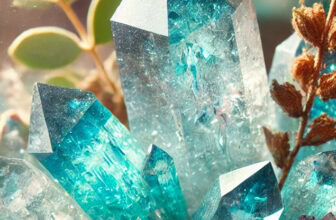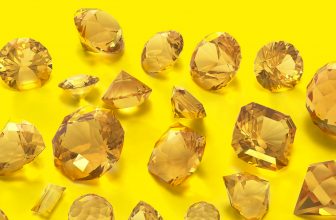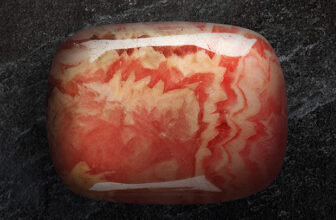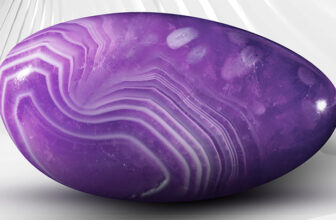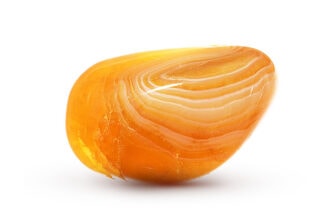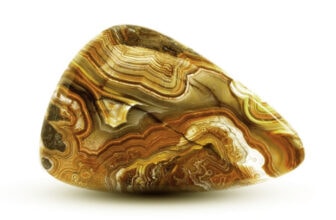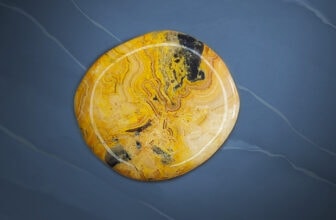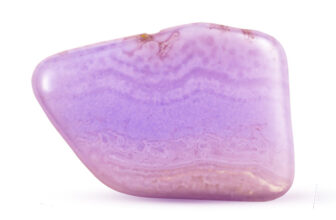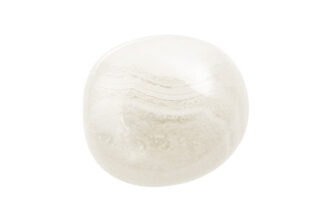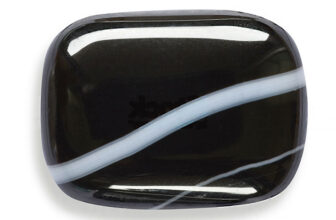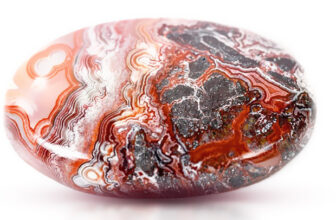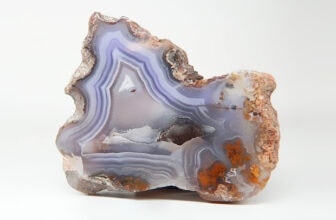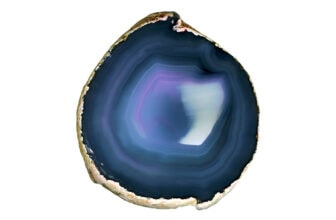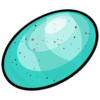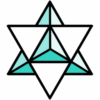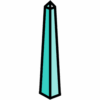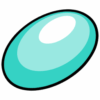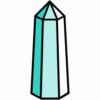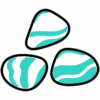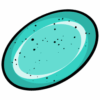The Subtle Power of Crystal Pendulums
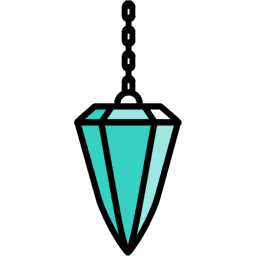 Where Energy Finds Its Voice
Where Energy Finds Its Voice
Have you ever wished for a way to hear your intuition – to translate that faint inner whisper into something you could actually see? Crystal pendulums do just that. They’re elegant instruments of translation, turning the quiet hum of energy into graceful, visible movement. A pendulum is, at its simplest, a crystal suspended from a chain or cord. Yet, in that simplicity lies something extraordinary – a bridge between logic and instinct, the conscious and the unseen.
Pendulums have long fascinated healers, mystics, and curious minds alike. Whether it’s a perfectly cut clear quartz point or a softly rounded amethyst, each pendulum is both a tool and a teacher. When it swings, it doesn’t just respond to gravity – it responds to resonance.
To the subtle interplay of energy that pulses through every living being. Some use them for divination or decision-making, others for energy alignment or chakra work. The movement becomes a language – yes, no, maybe – a gentle dialogue between your energy and your awareness.
But why crystals? Because crystals are nature’s precise recorders of vibration. Quartz amplifies clarity and focus. Rose quartz infuses each session with compassion and emotional balance. Obsidian grounds the reading, shielding from energetic noise. Each stone carries its own voice, its own tone in the energetic symphony. Together with your intent, the pendulum becomes not just an ornament, but an instrument – one that tunes you to the finer frequencies of your own consciousness.
The Ancient Art of Dowsing
Who first noticed that a stone could move to the rhythm of a question? Long before the modern world named it “dowsing,” ancient civilizations were already working with pendulum-like tools – slender rods, weighted strings, and crystals that seemed to dance in response to unseen forces.
In ancient Egypt, priests and healers used small pendulum instruments to locate water sources or determine the energetic purity of sacred objects. In China, records describe the use of “divining rods” in geomantic rituals – a blend of science, intuition, and reverence for the Earth’s natural energy fields.
The Romans, too, carried pendulums – not for mysticism, but for practical insight. Soldiers and farmers used them to find underground springs or mineral veins, trusting their subtle sway more than the dry surface of the soil. Across cultures and centuries, people noticed something extraordinary: when the human mind and body entered a focused state of inquiry, physical tools could mirror inner knowing.
During the Middle Ages and Renaissance, pendulums evolved from humble dowsing tools into instruments of inquiry and mysticism. They were used by physicians to diagnose energetic imbalance and by mystics to communicate with what they called the “unseen realms.” The French term radiesthesia emerged – literally “sensitivity to radiation” – referring to the human capacity to detect energetic frequencies through instruments like rods and pendulums.
By the 19th and 20th centuries, pendulums had found a new place in spiritualism, energy work, and healing arts. The rise of Reiki, crystal therapy, and holistic medicine reframed the pendulum not as a relic of superstition but as a partner in intuition – a quiet helper in the search for balance, insight, and peace. Today, that legacy continues. Whether you use a pendulum to check chakra alignment, test the energy of a crystal, or simply make a mindful decision, you are participating in a lineage that stretches back millennia – a conversation between human intention and the energy of the earth itself.
Forms of Energy
If every pendulum is a bridge between energy and insight, then each shape is a dialect – a slightly different way of speaking that same universal language. The diversity of pendulums mirrors the diversity of the people who use them: some seek clarity and precision, others healing and flow. Each form, each crystal, each curve subtly shifts how energy moves, responds, and translates.
Let’s start with the pointed pendulum – the classic design most often seen in spiritual shops and healing spaces. Its sharp tip functions like a laser, directing energy with accuracy and intent. Many practitioners use pointed pendulums for chakra diagnostics or specific yes/no questions because the movement feels crisp and clear, cutting straight to the core of the matter.
Then there’s the conical pendulum – rounded yet focused, a kind of middle ground between precision and softness. It’s often recommended for beginners because its shape encourages smooth, natural swings that are easy to interpret. The motion feels conversational rather than analytical – gentle, balanced, forgiving.
Spherical pendulums tell a different story altogether. Their rounded energy diffuses tension, encouraging emotional healing and introspection. When used over the heart or crown chakras, the circular form mirrors the flow of compassion and expansion, inviting openness rather than answers. In contrast, the Merkaba pendulum – a sacred geometric star – vibrates with higher frequencies. Each intersecting point represents harmony between the spiritual and physical planes, amplifying connection to higher guidance.
Of course, form is only one layer. The crystal itself shapes the pendulum’s “voice.” A clear quartz pendulum amplifies and clarifies energy, acting as an all-purpose communicator. Amethyst pendulums tune into spiritual protection and intuitive clarity, while rose quartz softens the dialogue, infusing compassion into every question. Obsidian pendulums anchor the process – they reveal truth without illusion, grounding intuition in honesty.
In Reiki or energy healing, practitioners often choose pendulums based on purpose. A multi-stone chakra pendulum might include seven crystals, each resonating with a specific energy center. A copper or brass pendulum may be used for dowsing physical locations or energy lines in the Earth. Every variation carries its own rhythm, its own message.
Tips for Beginners: Starting Your Pendulum Journey
1. Cleanse Before You Begin
Every crystal carries its own energetic memory. Before your first use, cleanse your pendulum to clear lingering vibrations. You can:
- Place it under moonlight overnight.
- Rest it on a selenite or clear quartz plate.
- Pass it gently through incense or sage smoke.
- Use sound – a singing bowl, bell, or tuning fork.
Choose whichever method feels most natural; it’s your intention that does the real cleansing.
2. Establish Your “Yes” and “No”
Hold your pendulum by the top of the chain, keeping your elbow steady. Ask, “Show me yes.” Then, “Show me no.” Watch the direction and rhythm – it may swing back and forth, side to side, or in circles. These movements form your personal energetic language. Don’t rush it; the pendulum learns your energy as much as you learn its motion.
3. Ask Clear, Neutral Questions
Pendulums respond best to calm, focused energy. Phrase questions so they invite clarity – for example:
- “Is this decision aligned with my highest good?”
- “Is my heart chakra in balance today?”
Avoid emotionally charged or double-barreled questions. The quieter the mind, the clearer the answer.
4. Stay Grounded and Centered
Before each session, take a few deep breaths. Imagine roots extending from your feet into the earth. A grounded body helps the pendulum respond to true resonance rather than nervous energy.
5. Practice Gratitude and Care
When you’re finished, thank your pendulum – yes, aloud or silently. Treat it with gentleness, as you would a trusted friend. Store it in a soft pouch, away from harsh environments or heavy energies.
6. Trust the Subtle Movements
Doubt can cloud the connection. Trust the small swings, the gentle shifts, even the pauses. Pendulum work is not about perfection – it’s about presence. The more you practice, the more fluent your dialogue with energy becomes.
7. Keep It Sacred, Keep It Simple
Use your pendulum ethically. Avoid probing into others’ energy or private matters without consent. Its wisdom is most accurate when guided by compassion and respect.
In the beginning, the pendulum might seem mysterious. With time, it becomes second nature – a quiet partner in reflection, healing, and self-trust. And one day, you’ll notice that the answers it offers are simply echoes of what your intuition already knows.

